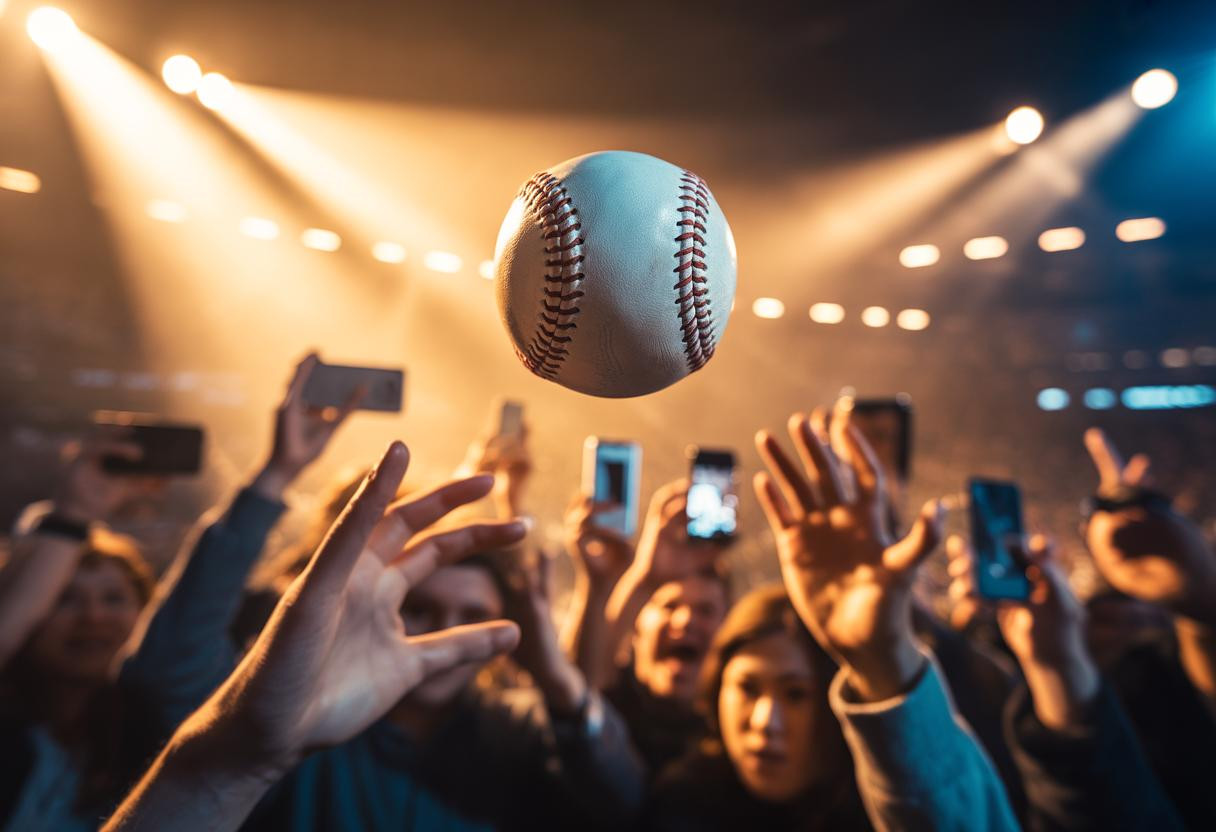When Shohei Ohtani’s 50th home run ball of the 2024 season landed in the stands at Miami’s LoanDepot Park, it instantly became worth $4.392 million – the highest price ever paid for a modern baseball. But what happened next reveals a fascinating cultural phenomenon that transforms ordinary fans into unwitting participants in a high-stakes treasure hunt spanning continents.
The birth of baseball’s most valuable artifacts
The moment Ohtani’s bat connects with a baseball, a complex ecosystem springs into action. Japanese media outlets have developed military-precision tracking systems to locate every single home run ball he hits, treating each one as a potential national treasure.
Chunichi Sports reporter Taro Abe exemplifies this dedication. After witnessing Ohtani hit two home runs against the Yankees, Abe wrote 13 stories in one night – 10 about Ohtani, including two specifically about fans who caught his homers. “We have to do this every time,” Abe explained while physically tracking down fans through stadium corridors.
This practice originated when Ohtani played for the Angels and became less accessible for direct interviews. Japanese journalists, desperate for content, discovered that cultural narratives about belief in higher purposes could be found in the stories of ordinary fans who caught these extraordinary artifacts.
How Japanese media transformed fan experiences into national news
The systematic hunt for home run catchers
Every Ohtani home run triggers an immediate response from Japanese reporters stationed at MLB stadiums. They abandon their press box positions, racing through crowds to locate the lucky fan who caught the ball. This isn’t casual journalism – it’s orchestrated cultural documentation.
The physical toll is significant. Abe describes the exhaustion of making multiple stadium traversals in a single game, but the perceived value to Japanese audiences makes this effort worthwhile. These human-interest stories extend Ohtani’s achievements beyond statistics into shared cultural experiences.
From baseball souvenir to investment vehicle
The economic transformation of these balls defies traditional sports memorabilia markets. Ohtani’s 50-50 ball wasn’t purchased by an individual collector but by a Taiwanese investment company, signaling institutional recognition of these items as legitimate financial assets.
A commemorative card celebrating Ohtani’s 50-50 achievement sold for $1.07 million, while autographed baseballs routinely fetch over $23,000. This pricing structure places Ohtani memorabilia in categories typically reserved for rare art or historical artifacts, similar to how investments that create both financial returns and cultural spaces can appreciate beyond their original utility.
The global impact of baseball’s cultural ambassadors
These artifacts transcend national boundaries in unexpected ways. The 50-50 ball’s journey from Miami to a public exhibition on the 89th floor of Taipei 101 demonstrates how Ohtani’s achievements have been adopted into broader East Asian cultural narratives.
International tourists now travel specifically to view these balls. A 79-year-old woman from Fukuoka visited Taiwan with her daughter, remarking on their luck at seeing the ball during their trip. This represents a new form of sports heritage tourism centered around physical artifacts of athletic achievement.
The phenomenon reflects how identity formation in our digitally connected world can be anchored by tangible objects that represent shared cultural values across different societies.
What this means for the future of sports memorabilia
The Ohtani ball phenomenon has reset market expectations and created new precedents for sports collectibles. The $4.392 million auction price established a benchmark that will likely influence valuations for future milestone achievements across all sports.
However, this commercialization raises ethical questions about privacy and fan experience. Ordinary attendees who catch these balls are suddenly thrust into media spotlights they never anticipated, transforming spontaneous sporting moments into potentially life-changing financial decisions.
The lasting legacy of baseball’s modern treasures
Shohei Ohtani’s home run balls represent more than sports memorabilia – they’ve become cultural artifacts that bridge continents and create shared narratives across different societies. As institutional buyers and international exhibitions continue to elevate these objects, they’re establishing new frameworks for how athletic achievements can transcend sports to become vessels of cultural meaning and financial value.
